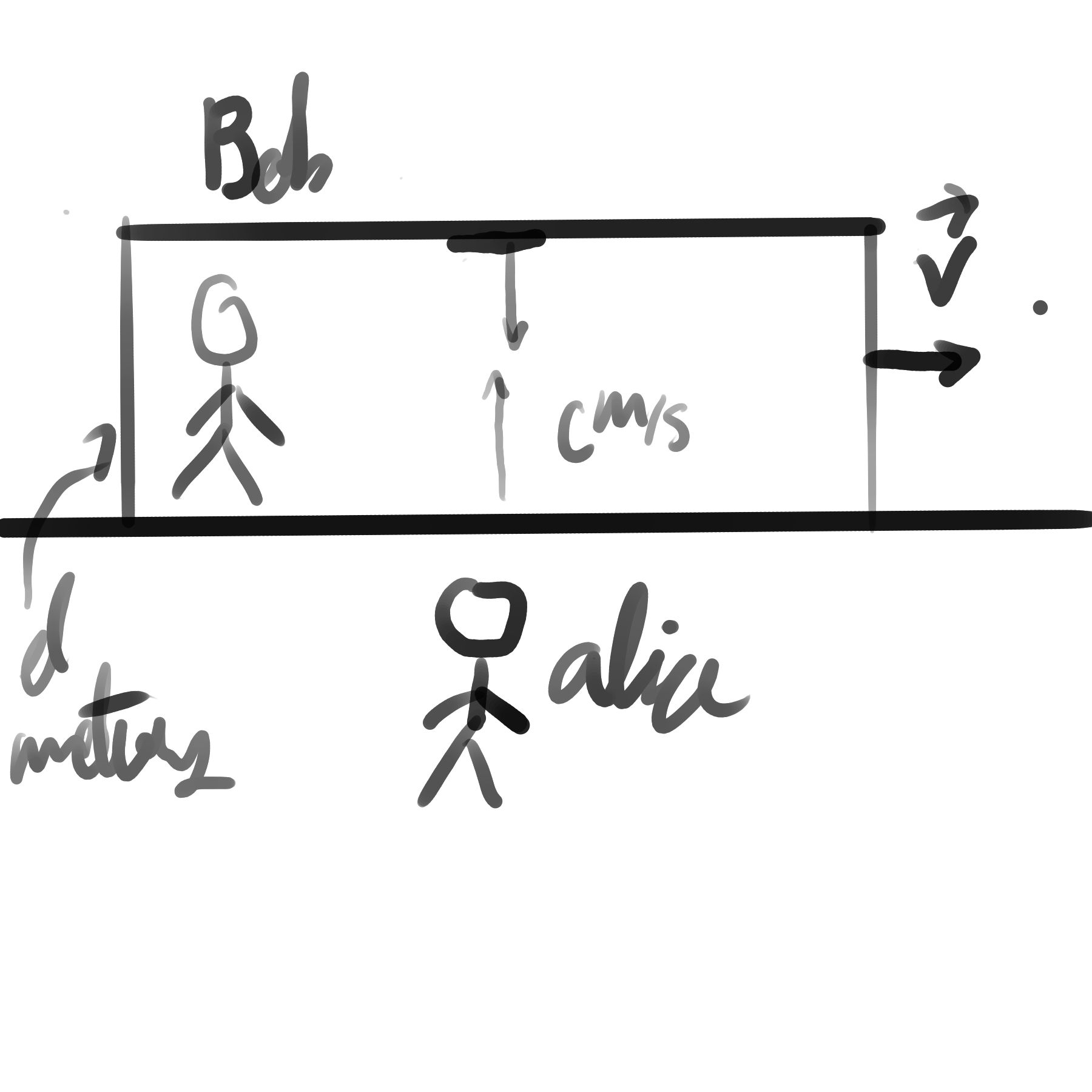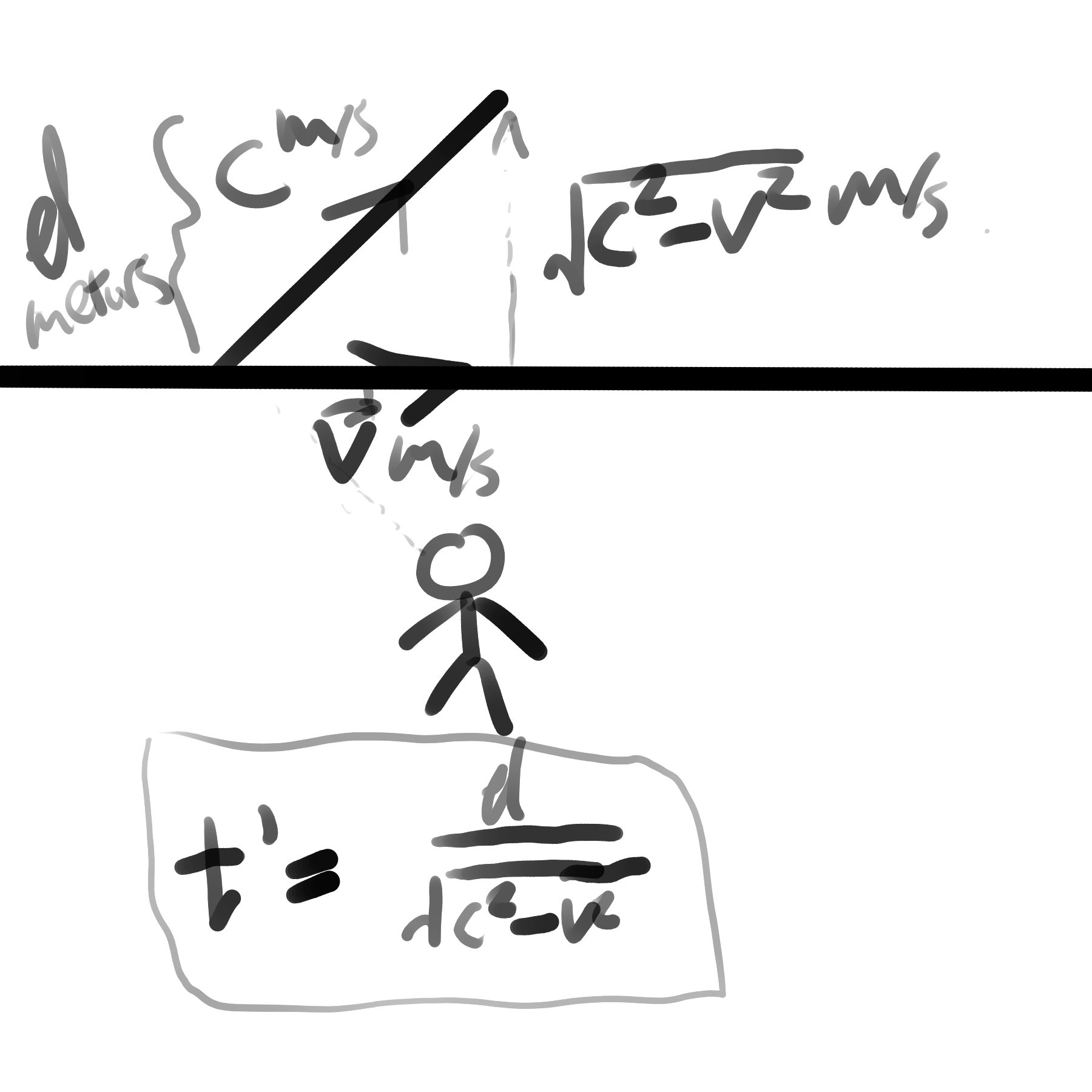special relativity
Table of Contents
1. Motivation
Newtonian mechanics is proven to be experimentally effective for macroscopic phenomena. However, it fails in the attempt to unify it with Maxwell's Equations; the speed of light and electromagnetic radiation in general confirmed by Maxwell's equations are invariant to relative speed; this is in contradiction to the Galilean velocity addition that Newtonian mechanics postulates:
\begin{align*} \vec{v} = \vec{v}_{1} + \vec{v}_{2} \end{align*}Where \(\vec{v}_{1}\) and \(\vec{v}_{2}\) are the speeds of the two objects, and \(\vec{v}\) is the relative velocity between the two. The contradiction lies in the attempt to do this type of velocity addition with the speed of light. The speed of light must remain invariant including the relative speed (all experiments thus far confirm this and Maxwell's equations have an absolute velocity of the speed of light in a vacuum), but when another object is moving relative to light, it results in something lesser or greater than the speed of light, even though it must remain the same. To solve this, we must add another two postulates to Newtonian mechanics:
- The speed of light must remain constant under all reference frames.
- The laws of physics remain consistent within all inertial reference frames.
The result of these two additions is known as the special theory of relativity.
2. Derivation of Gamma Factor
Suppose Bob is on a train, where the train is moving at a constant speed to the right \(\vec{v}\). Alice is outside of the train observing Bob. Now Alice and Bob decide to use a clock to keep track of time; they do this by calculating the amount of times light bounces from the floor to the roof of the train on mirrors. Note that the method by which they keep track of time doesn't matter, and who keeps track of time doesn't matter, as we will see. All that matters is that nothing can move faster than the speed of light, so no information can either; light in this case can be replaced with something else that can keep track of time in the same way. In any case, once the light reaches the roof from the floor, where this distance is \(d\) meters, \(\frac{d}{c}\) seconds will have passed for Bob.

Figure 1: A very scientifically accurate drawing of the situation
Now this image is from Bob's perspective; when we switch to Alice's perspective, we gain a new insight; that light has to travel the same speed for her, but it has a larger distance to travel because of the train's velocity.

Figure 2: Light ray from Alice's perspective
from this diagram, we can gather that the amount of time it takes for light to reach the roof will be longer. Also, we can see that if Alice believes in Bob's clock, her time would be:
\begin{align*} t' = \frac{d}{\sqrt{c^{2} - v^{2}}} \end{align*}which is considerably different from the \(\frac{d}{c}\) we got for Bob. This means that using the same clock can cause different time measurements between the two people. The gamma factor is defined as:
\begin{align*} \gamma = \frac{t'}{t} \\ \gamma = \frac{d}{\sqrt{c^{2} - v^{2}}}\frac{c}{d} \\ = \frac{c}{\sqrt{c^{2} - v^{2}}} \\ = \frac{c}{\frac{c}{c}\sqrt{c^{2} - v^{2}}} \\ \gamma = \frac{1}{\sqrt{1 - \frac{v^{2}}{c^{2}}}} \end{align*}Note that the gamma factor is independent of distance traveled, which lets us calculate our relativistic time:
\begin{align*} \gamma t = t' \end{align*}There is a profound implication from this realization, and that is that it is not sufficient to view time in an objective way; time measurements are inertial reference frame dependent. This process where time slows down for the moving reference frame is called time contraction.
3. Space Contraction
Now we introduce the idea of space contraction; just like how time can slow down for moving inertial reference frames with respect to other reference frames, space can also contract in the same way. Imagine a light ray that goes from one side of the train to the other.